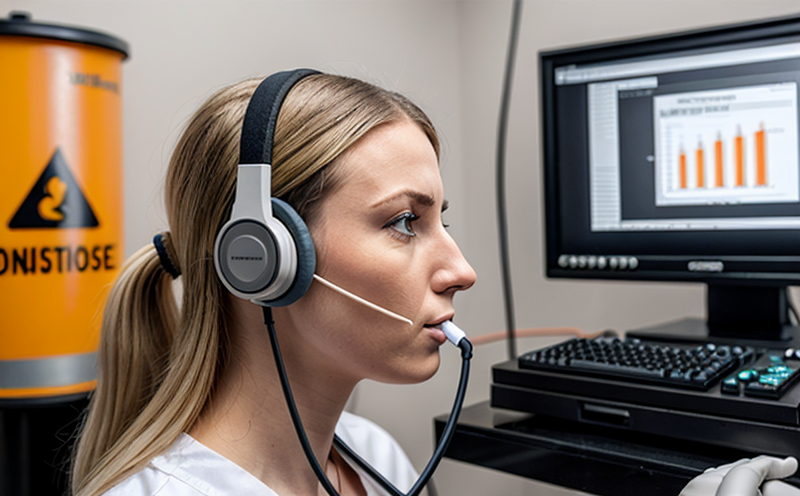OSHA 29 CFR 1910.95 Occupational Noise Exposure Compliance Testing
The Occupational Safety and Health Administration (OSHA) establishes strict standards to protect workers from occupational noise exposure in OSHA 29 CFR 1910.95. This regulation aims to prevent hearing loss by limiting the permissible levels of sound that employees can be exposed to over a working lifetime. The standard requires employers to implement engineering controls, administrative controls, and personal protective equipment (PPE) such as earplugs and earmuffs where noise exposures exceed 85 decibels (dB) for an eight-hour time-weighted average.
Compliance with OSHA 29 CFR 1910.95 is essential for employers to ensure worker safety, avoid fines, and maintain a positive workplace culture. Our laboratory provides comprehensive testing services that meet the stringent requirements of this standard. We offer noise dosimetry, sound level measurement, and personal protective equipment (PPE) validation using state-of-the-art instrumentation.
Our team of experienced acousticians and audiology professionals uses advanced equipment to measure the levels of noise in various work environments. This includes portable noise dosimeters that can be worn by workers for continuous monitoring over a working shift, ensuring accurate assessment of individual exposure levels. We also employ sound level meters and octave band analyzers to evaluate the frequency content of the noise.
For personal protective equipment validation, we conduct testing using ANSI S3.19-2012 (R2017) standards for hearing protection devices. Our laboratory ensures that PPE is suitable and effective in reducing the risk of occupational hearing loss by measuring attenuation levels and ensuring proper fit through real-ear measurements.
Our compliance testing services include:
- Noise dosimetry
- Sound level measurement
- Hearing protection device validation
- Auditory acoustics assessment
- Environmental noise surveys
- Compliance with ISO, EN, and ANSI standards
- Data interpretation and reporting
Our approach ensures that employers are fully compliant with OSHA 29 CFR 1910.95 requirements while also providing actionable insights to improve workplace safety further.
Why It Matters
The importance of compliance with OSHA 29 CFR 1910.95 cannot be overstated, especially for industries where noise levels are consistently high and prolonged exposure is unavoidable. Occupational noise exposure can lead to permanent hearing loss, tinnitus, and other serious health issues that negatively impact workers' quality of life.
Employers have a legal obligation under OSHA to provide a safe work environment by implementing necessary controls and providing adequate PPE. Failure to comply with these regulations not only endangers employees but also exposes employers to potential legal actions and financial penalties. By adhering to the standards set forth in this regulation, employers can protect their workforce while maintaining a compliant workplace.
The testing services we offer help identify areas where noise levels are excessive and suggest practical solutions for reducing exposure. This proactive approach ensures that employees remain safe and healthy, fostering a positive work environment that enhances productivity and morale.
Quality and Reliability Assurance
We take pride in maintaining the highest standards of accuracy and reliability in our testing services. Our laboratory is equipped with cutting-edge equipment that adheres to international standards, ensuring precise measurements and reliable data. We employ a team of certified acousticians who are well-versed in the latest techniques and methodologies for conducting noise exposure assessments.
To ensure consistency and quality, we follow rigorous procedures for calibrating our instruments regularly and maintaining them in optimal working condition. This includes using reference materials traceable to national standards such as NIST (National Institute of Standards and Technology) and ISO 362-1:2007. We also participate in proficiency testing programs organized by reputable organizations like A2LA (Accreditation Laboratory for Analytical Testing).
The data we provide is not only accurate but also actionable, allowing employers to make informed decisions about workplace safety measures. Our reports are detailed and transparent, offering insights into potential areas of improvement that can help reduce noise exposure and enhance overall worker safety.
Customer Impact and Satisfaction
Our commitment to quality and reliability has earned us a reputation for excellence in the industry. By partnering with our laboratory, customers gain access to expert acousticians who possess deep knowledge of noise exposure assessment techniques. Our comprehensive testing services help businesses meet regulatory requirements while also identifying opportunities for process optimization.
We understand that compliance is just one part of ensuring worker safety; we also emphasize continuous improvement and employee well-being. Through our tailored recommendations, we assist clients in implementing effective strategies to reduce noise levels and improve working conditions. This proactive approach not only ensures compliance but also contributes to a healthier and more productive workforce.
Customer satisfaction is paramount to us, and we strive to exceed expectations by delivering accurate, reliable, and timely results. Our team works closely with clients to understand their specific needs and challenges, offering personalized solutions that align with their goals. Whether it's conducting an initial assessment or providing ongoing support, our dedication to excellence sets us apart from other laboratories in the industry.





